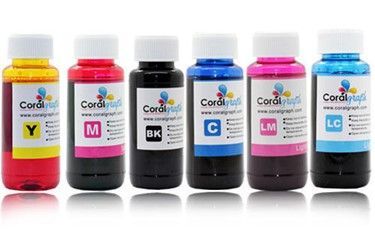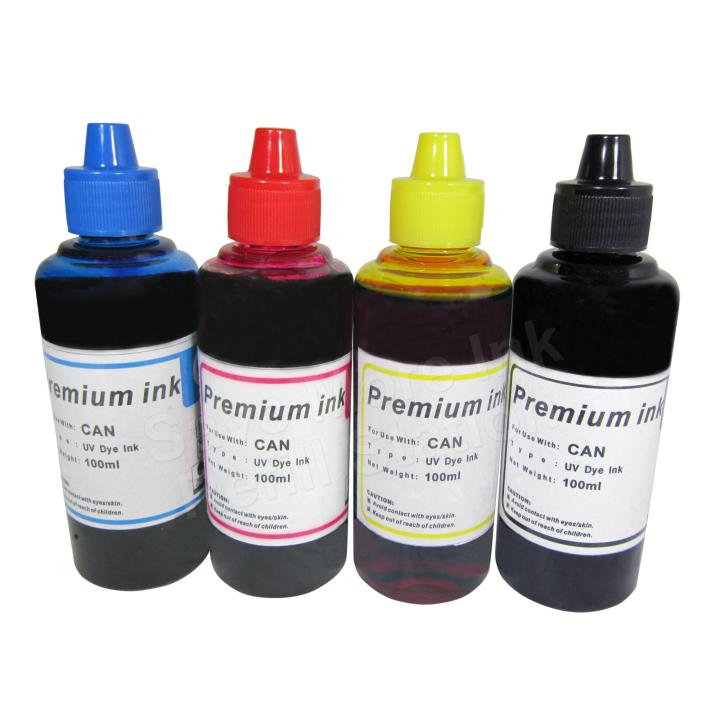In-depth Understanding of Printer Technology: What is Dye Ink?
Introduction
Understanding the printer technology, particularly the ink, can significantly improve the overall print quality. This article provides a comprehensive exploration of one essential printer ink, the dye ink. It reveals what it is, how it's manufactured, its role, benefits, and potential drawbacks in digital printing. Additionally, this article will serve as a guide in choosing between dye ink and other types of inks and share tips for its optimal use and maintenance.
What is Printer Ink?
Printer ink is a vital aspect of printing technology that facilitates the actual process of producing images and text onto paper. This complex mixture consists of several key components, each playing a unique role in ensuring optimal printing performance. Let's dissect the printer ink to understand its ingredients and their functionalities.
1. Solvents: These are used to keep the ink in a liquid state, allowing it to flow smoothly through the printer cartridges to the inkjet nozzles.
2. Resins: These components function as binding agents. They help adhere the ink to the paper, ensuring the printed image or text does not smudge or peel off quickly.

3. Pigments/Dyes: The intrinsic core of printer ink, pigments or dyes are responsible for producing the actual colors. They can either be naturally obtained or be synthesized in laboratories.
4. Additives: These are tailored components added to achieve certain desired properties like quicker drying time, resistance to smudging, or enhancement in print quality.
In essence, successfully printed images or text papers are a product of these harmoniously working components of printer ink. The decisive factor for ink type, however, is the pigments (for pigment-based inks) or dyes (for dye-based inks) used.
Unraveling the Mystery: What is Dye Ink for Printers?
The Production Process of Dye Ink
Dye ink, a common form of printer ink, is essentially a colorant completely dissolved in a liquid. This is where it markedly differs from its close counterpart, pigment ink, which comprises minuscule insoluble colorant particles suspended in a liquid. The homogeneous liquid that the dye ink forms yields images that are smooth and vivid, which is why dye ink is predominantly used in inkjet printers. Notably, dye ink is responsible for creating images with exceptional photo-quality.
The type of dye utilized can considerably dictate the performance of the ink relating to the vibrancy and range of its colors as well as its permanence. Among the extensively used dyes in printer inks include:

- Acid dyes
- Direct dyes
- Reactive dyes
- Disperse dyes
The Manufacturing Process of Dye Ink:
1. Selection of a suitable dye:
The first step entails meticulously selecting the appropriate dye for the ink. Here, variables such as the desired color range, vibrancy, and durability of the ink are significant factors.
2. Dissolving in a carrier liquid:
This involves dissolving the chosen dye, typically in water or a blend of water and glycol. This mix is then merged with additional specialized ingredients such as humectants and surfactants to magnify the performance level of the ink.
3. Filtration:
In the final step, the concocted product undergoes a thorough filtration process to eliminate any undissolved dyes and potential impurities, which could lead to the clogging of printer nozzles.
Thus, dye ink is a product born from a fusion of intricate manufacturing elements. Its attractiveness lies majorly in its ability to generate impressive, high quality, and vivid images, ideal for photography and graphic design.
The Role and Benefits of Dye Ink in Digital Printing
Acknowledging the Possible Limitations of Using Dye Ink
When it comes to digital printing, dye ink plays a quintessential role. Let's delve into the benefits and drawbacks that come with the use of dye ink:
Key Advantages:
1. High-quality Prints: Dye ink is known for its vibrant and smooth output, which leads to superior photo prints.
2. Cost-Effective: Compared to other ink types, dye ink is more economical, making it an ideal choice for high-volume printing.
3. Fast Drying: Dye ink dries quickly, reducing the chances of smudge on newly printed documents and facilitating faster printing tasks.
4. Color Variety: Dye inks exhibit a broader color gamut than pigment inks, thus capable of producing richer and varied colors that highly benefits graphic designers and photographers requiring high color accuracy.
However, there are some potential drawbacks to be aware of:
Key Drawbacks:
1. Lower UV-Resistance: Dye ink has a lower level of UV-resistance compared to other inks. Therefore, under sunlight exposure, it can fade faster, especially if it's of inferior quality.
2. Limited Performance on Special Paper Types: Dye ink may not offer the same high-level performance on certain types of papers, such as glossy or watercolor paper, like pigment inks.
Understanding these pros and cons of dye ink will allow individuals and businesses to make an informed decision tailored to their specific printing needs.
Dye Ink vs. Other Inks: Making an Informed Choice
When shopping for printer inks, two broad categories you will likely come across are dye inks and pigment inks. Your choice between the two depends on your specific printing requirements. This section guides you to grasp the pros and cons of dye inks compared to other inks:
#### Pros of Dye Inks:
- *__Vibrancy__*: Dye inks are renowned for their vivid color output. They offer an excellent choice for printing high-definition and colourful images.
- *__Smooth Output__*: Unlike pigment inks, dye inks are homogeneous. This leads to a smoother, even finish.
- *__Cost-effectiveness__*: Dye inks are typically priced lower than pigment inks. They offer substantial cost savings for those requiring considerable volume printing.
- *__Quick Drying__*: Reduce your waiting time with dye inks as they tend to dry faster, thereby minimizing the risk of smudging on freshly printed documents.
- *__Wide Color Gamut__*: Dye inks outperform pigment inks when it comes to the range of available colors. This is a deciding factor for graphic designers and photographers who require high color accuracy.
#### Cons of Dye Inks:
- *__Lower UV-Resistance__*: One significant setback of dye inks is its lessened resistance to UV light. They are prone to fading faster than pigment inks, especially on exposure to sunlight.
- *__Incompatibility with Certain Paper Types__*: Dye ink may not perform as well on specific paper types, like glossy or watercolor paper, as pigment inks might.
Pondering these points can provide you with a clear road map for deciding between dye ink and other inks, based on your preferences and specific printing needs.
Tips for Optimal Use and Maintenance of Dye Ink
To extract the most value from dye ink, proper utilization and maintenance are critical. Here are some tips to ensure optimal use and longevity of your dye ink:
1. Environment Conditioning: Dye ink performs best when stored in a cool, dry environment. Exposure to heat and humidity might compromise the ink’s quality.
2. Proper Handling: Avoid shaking the ink cartridge excessively as it can lead to bubbles, which can affect the printer's performance.
3. Routine Cleaning: Regularly clean your printer's nozzle to avoid blockages due to possible ink residue and impurities.
4. Timely Refilling: Never let your ink cartridge run dry. Always refill the cartridge when the ink level is low.
5. Appropriate Paper: Opt for the right kind of paper based on the dye ink's characteristics for the best results. For instance, whilst dye ink may not produce the best results on glossy paper, it works excellently on matte finish papers.
6. UV Protective Measures: Protect your printed materials from prolonged exposure to direct sunlight, given dye inks are not very UV-resistant.
Remember, adequate upkeep and informed usage of dye ink can significantly improve the lifespan of your printer and provide superior quality printing for a long time.
Conclusion
Choosing between dye ink and other types of inks fundamentally depends on your particular needs and preferences. Where dye ink scores over others is it's vibrancy, smooth output, and cost-effectiveness. If high quality, photo-realistic prints are your priority, dye ink is the way to go.
On the other hand, if longevity and UV resistance are more crucial for you, pigment ink may be a better option. The physical nature of pigment particles enables them to withstand weathering and fading better than dyes. Additionally, pigment inks are a better choice for specialty papers and canvas.
Related FAQs about what is dye ink for printers
How Does Dye Ink Differ from Other Types of Printer Ink?
The significant difference between dye ink and other types of printer ink, like pigment ink, lies in their composition. Dye ink consists of colorants fully dissolved in a liquid, resulting in a homogeneous liquid that forms images with exceptional smoothness and vividness.
Why Should I Choose Dye Ink for My Printer?
Choosing dye ink can depend on your specific printing needs. Dye ink is renowned for producing high-quality, vibrant, and smooth images, especially beneficial for photo printing. Additionally, it is more cost-effective than other inks, suitable for high-volume printing.
What Are the Best Practices for Maintaining Printers Using Dye Ink?
Routine cleaning of printer nozzles, prompt refilling of ink cartridges, and conditioning the printer to cool, dry environments are some effective maintenance practices. Also, avoid excessive shaking of the ink cartridge and ensure you use appropriate paper for printing.


